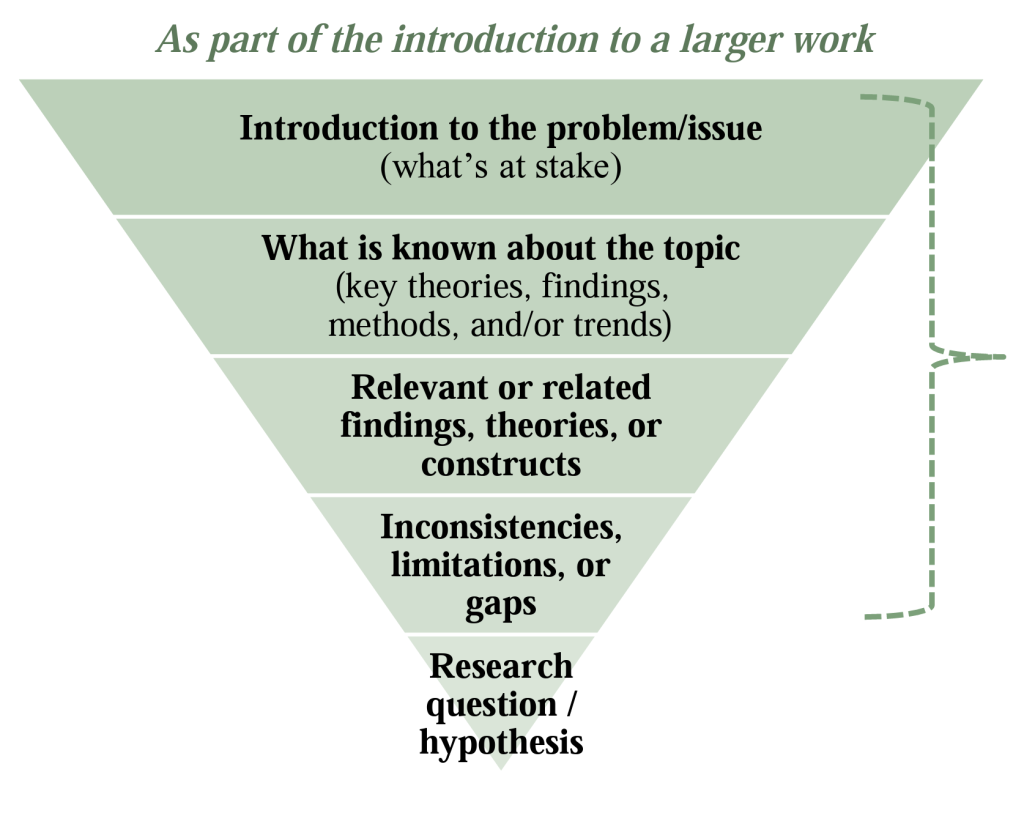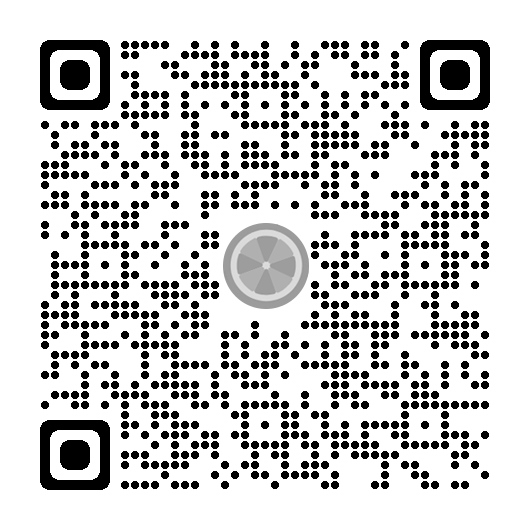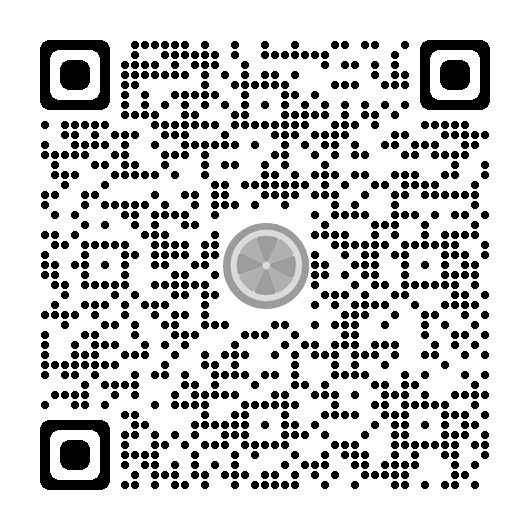Writing the Literature Review
Barry Mauer and John Venecek
We discuss the following topics on this page:
- The Literature Review
- What is the Purpose of the Review?
- What is the Scope of the Review?
- Strategies for Getting Started
- Types of Literature Reviews
- Composition Guidelines
- How to Locate Reviews by Discipline
- Key Takeaways
We also provide the following activities:
 The Literature Review [1]
The Literature Review [1]
Conducting a literary studies research project involves time and effort, with much of it going towards the development of a literature review. A literature review synthesizes the materials you gathered for your annotated bibliography and provides the conceptual “map” in which you will position your argument. It sets your reader up to understand the scholarly conversation about your research problem. The literature review might fill several pages of your research paper and usually appears soon after an introduction but before you present your detailed argument.
A literature review provides your audience with an overview of the available research about your area(s) of study, including the literary work, your theory, and methodology. The literature review demonstrates to the reader how these scholarly discussions have changed over time, and it allows you to position your research in relation to research that has come before yours. Your aim is to present the discussion up to this point. Depending on the nature of the assignment, you may also include your critical commentary on prior research, noting among this material the weaker and stronger arguments, breakthroughs and dead ends, blind spots and opportunities, the invention of key terms and methods, mistakes as well as misreadings, and so on.
Once you have gathered the research materials you need for your literature review, you have another task: conducting an analysis on the research to see where your original contribution fits into the scholarly conversation. As the saying goes, “we are standing on the shoulders of giants.” Your job is to show a portrait of these giants to your audience, and to show how your work relates to the portrait. On many scholarly topics, literature reviews already exist. You may refer to such existing reviews within your own, indicating any materials might have been overlooked, new developments that have arisen since the publication of the existing literature review, and new perspectives or insights you have about the materials.
Some beginning researchers try to tear down the work of other researchers in an effort to make their own work look good by comparison. It rarely works. First, it tends to make your audience skeptical of your claims. Second, it ignores the fact that even the mistakes, blind spots, and failures of other researchers contribute something to our knowledge. Albert Einstein didn’t disrespect Sir Isaac Newton by saying Newton’s theory of space was wrong and terrible and that Einstein’s own theory was great by comparison. He built upon Newton’s work, showing how it could be improved. If, however, a researcher willfully sets out to deceive or distort or to tear down the work of other scholars without good reason, then their work does not deserve such deference.
Most literature reviews appear after the introduction. It presents your reader with relevant information about the scholarly discussion up to now. Later in your paper, you discuss your contribution. Before you begin work on your literature review, let’s discuss what we mean by “literature”; understand the purpose and scope of the review; establish criteria for selecting, organizing, and interpreting your findings; and discuss how to connect your findings to your research question.
 What is the Purpose of the Review?
What is the Purpose of the Review?
Many students seek to “find sources that agree with my claim or idea.” That approach is too narrow, in our view. If we use such an approach, we may get the following results:
- Because we can find sources that agree with almost any claim, readers will wonder whether your claims are weak and the sources are cherry picked.
- While literary scholars sometimes cite authorities to support their claims, they don’t rely only on authority. They respect authority, but not too much. Your own claims need to rely more on evidence (from the literary text, historical and biographical information), and your critical and creative reasoning skills.
- Scholarship is a conversation; thus, the goal is less about finding agreement and more about joining the conversation with the aim of making a valuable contribution to the discussion.
The literature review provides your reader with an overview of the existing research about your topic or problem. It provides the context necessary for your reader to catch up with the scholarly conversation and then to appreciate the value of your contribution to it. The literature review sharpens the focus of your research and demonstrates your knowledge and understanding of the scholarly conversation around your topic, which, in turn, helps establish your credibility as a researcher.
Creating the literature review involves more than gathering citations. It is a qualitative process through which you will discover what is already known about your topic, and identify the key authorities, methods, and theoretical foundations, so you can begin to position your contributions within the scholarly conversation.
 What is the Scope of the Review?
What is the Scope of the Review?
Defining the scope of your review will also help you establish criteria to determine the relevance of the sources you are finding. At this stage, you are not reading in-depth; instead, you are skimming through what has already been published and identifying the major concepts, theories, methodologies, and methods present within these published works. You should also be identifying connections, tensions, and contradictions within the already published works of your topic or problem. This involves building on the knowledge of others and understanding what methods, measures, and models we have inherited from previous researchers in our field.
Literature Reviews: Common Errors Made When Conducting a Literature Review [12 min 22 sec]
Video provided courtesy of the Center for Quality Research (CQR)
 Strategies for Getting Started
Strategies for Getting Started
A literature review helps your reader understand the relationship of your research project to the work of other scholars. It covers the existing knowledge about a problem, and allows you to show the relevance/significance of your contribution to the discussion. Your reader may or may not have read scholarly literature about the theories, methodologies, and literary works you are discussing. But they want to know that you have read it and have thought about it. Your literature review provides not only an overview of the existing scholarship for readers; it also offers your perspective on it.
Begin your work on the literature review by synthesizing the various sources in your annotated bibliography.
For advice on Synthesizing Sources, consider the following from The Purdue Online Writing Lab:[2]
Note that synthesizing is not the same as summarizing.
- A summary restates the information in one or more sources without providing new insight or reaching new conclusions.
- A synthesis draws on multiple sources to reach a broader conclusion.
- Don’t force a relationship between sources if there isn’t one. Not all of your sources have to complement one another.
- Do your best to highlight the relationships between sources in very clear ways.
- Don’t ignore any outliers in your research. It’s important to take note of every perspective (even those that disagree with your broader conclusions).
Not all humanities research projects contain literature reviews, but many do. Keep in mind that the type of literature review you choose (see list below) pertains to the secondary research – other scholarly sources – and not to the primary literary work. For instance, a literature review about Kate Chopin’s writing will be your thoughts about the scholarship on Chopin and not about Chopin’s text itself. You are summarizing what you see in the scholarly literature about Chopin’s writing. The literature review puts you in the position of authority not just on Chopin’s writing but on the scholarship about her writing. You are seeking to understand what scholars have said about her work. Scholars might belong to different schools of thought (psychoanalytic, feminist, Marxist, etc.). They might make different arguments about Chopin. They might use different methodological approaches.
If your research involves two or more theories, such as psychology and genre studies, you may need to create multiple literature reviews, one for each theory or methodology. If the theories overlap with each other significantly (i.e., Marxism and Cultural Studies), you may combine them. Your literature review need not include everything about the subject area – you would need to write a book to cover a single theory – but only those concepts and methods that are most relevant to your research problem.
Factors to Consider When Developing Your Literature Review
- Determine the Scope: How broad or narrow should your literature review be? You may want to focus on recent scholarship only, or on a particular school of thought in the literature. Your scope is determined by your purpose; what is it you aim to achieve with your research?
- Establish Criteria: We discussed the importance of defining the purpose and scope of your review on the previous page, but it’s worth reviewing here as well. This step will help you establish important criteria and focus your searching. For example, how many sources will you need? What types of sources (primary, secondary, statistics, media)? Is currency important? Do you know who the prominent authors or theorists are in your subject area? Take some time to map out these or other important factors before you begin searching journals and databases.
- Consider Your Audience: Unlike a work cited page or an annotated bibliography, both of which are lists of sources, a literature review is essayistic and can be considered a precursor to your final paper. Therefore, it should be written in your own voice, and it should be geared toward a specific audience. Considering your audience during this early stage will help focus your final paper as well.
- Find Models: We’ll discuss the different types of literature reviews and how to locate examples in the section below. However, even if you’re undecided about what type of review will work best for you, you may want to review some example literature reviews to get a sense of what they look like before you begin your own.
One piece of advice before starting: look for existing literature reviews on your area of scholarship. You can build on the work that other scholars have put into reviewing the scholarly literature. There’s no need to completely “reinvent the wheel” if some of the work is already done.
Scholars sometimes publish “stand-alone” literature reviews that are not part of a larger work; such literature reviews are valuable contributions to the field, as they summarize the state of knowledge for other scholars.
 Types of Literature Reviews
Types of Literature Reviews
Maria J. Grant and Andrew Booth’s “A Typology of Reviews” identifies 14 distinct types of literature reviews. Further, the UCLA library created a chart to complement the article and for easy comparison of those 14 types of reviews. This section provides a brief summary of the most common literature reviews. For a more complete analysis, please see the full article and the chart.
To choose the most appropriate structure, put yourself in your reader’s shoes and think through their need for information. The literature review is about providing context for your contribution. How much context do people need? Keep it to the minimum necessary; compressing a lot of information into a small amount of text is a must.
These structures are not meant to be straightjackets but tools to help you organize your research. If you find that the tool is working, then keep using it. If not, switch tools or modify the one you are using. Keep in mind that the types of literature reviews are just different ways of organizing information. So, you can discuss literary trends without organizing your review of secondary literature by trend; your discussion can be organized by theory or theme, for examples. In our literature reviews, we are not recounting other scholars’ arguments at length but merely providing key concepts so we can summarize the discussion so far and position our own claims. You don’t have to adhere strictly to one structure or another. They are just organizing tools that help you manage your material (and help your reader make sense of it).
- Traditional or narrative reviews: This approach will generate a comprehensive, critical analysis of the published research on your topic. However, rather than merely compiling as many sources as possible, use this approach to establish a theoretical framework for your paper, establish trends, and identify gaps in the research. This process should bring your research question into clearer focus and help define a thesis that you will argue for in your paper. This is perhaps the most common and general type of literature review. The examples listed below are all designed to serve a more specific purpose.
- Argumentative: The purpose of an argumentative literature review is to select sources for the purpose of supporting or refuting a specific claim. While this type of review can help the author make a strong case for or against an issue, they can also be prone to claims of bias. Later in this textbook, we will read about the distinction between warranted and unwarranted bias. One is ok and the other is not.
- Chronological: A chronological review is used when the author wants to demonstrate the progression of how a theory, methodology, or issue has progressed over time. This method is most effective when there is a clear chronological path to the research about a specific historical event or trend as opposed to a more recursive theoretical concept.
- By trend: This is similar to the chronological approach except it focuses on clearly-defined trends rather than date ranges. This would be most appropriate if you want to illustrate changing perspectives or attitudes about a given issue when specific date ranges are less important than the ebb and flow of the trend.
- Thematic: In this type of literature review, the author will select specific themes that he or she feels are important to understanding a larger topic or concept. Then, the author will organize the sources around those themes, which are often based on relevance or importance. The value of this method is that the process of organizing the review by theme is similar to constructing an argument. This can help the author see how resources connect to each other and determine how as well as why specific sources support their thesis.
- Theoretical: The goal of this type of review is to examine how theory has shaped the research on a given topic. It establishes existing theoretical models, their connections, and how extensively they have been developed in the published research. For example, Jada applied critical race theory to her analysis of Sonny’s Blues, but she might also consider conducting a more comprehensive review of other theoretical frameworks such as feminism, Marxism, or postmodernism. Doing so could provide insight into alternate readings and help her identify theoretical gaps such as unexplored or under-developed approaches to Baldwin’s work.
- Methodological: The approach focuses on the various methodologies used by researchers in a specific area rather than an analysis of their findings. In this case, you would create a framework of approaches to data collection related to your topic or research question. This is perhaps more common in education or the social and hard sciences where published research often includes a methods section, but it is sometimes appropriate for the digital humanities as well.
- Scoping: The aim of a scoping review is to provide a comprehensive overview or map of the published research or evidence related to a research question. This might be considered a prelude to a systematic review that would take the scoping review one step further toward answering a clearly defined research question. See below for more details.
- Systematic: The systematic review is most appropriate when you have a clearly-defined research question and have established criteria for the types of sources you need. In this way, the systematic review is less exploratory than other types of reviews. Rather, it is comprehensive, strategic, and focused on answering a specific research question. For this reason, the systematic review is more common in the health and social sciences, where comprehensiveness is more important. Literature reviews in the Humanities are not usually exhaustive but tend to show only the most representative or salient developments in the scholarship.
- Meta-analysis: Does your research deal with statistics or large amounts of data? If so, then a meta-analysis might be best for you rather than providing a critical review, the meta-analysis will summarize and synthesize the results of numerous studies that involve statistics or data to provide a more comprehensive picture than would be possible from just one study.
An argumentative literature review presents and takes sides in scholarly arguments about the literary work. It makes arguments about other scholars’ work. It does not necessarily involve a claim that the literary work is itself making an argument. Likewise, a chronological literature review presents the scholarly literature in chronological order.
You don’t need to keep strictly to one type. Scholars often combine features from various types of literature reviews. A sample review that combines the follow types –
- Argumentative
- Thematic
- Theoretical
- Methodological
- Scoping
– is the excellent work of Eiranen, Reetta, Mari Hatavara, Ville Kivimäki, Maria Mäkelä & Raisa Maria Toivo (2022) “Narrative and Experience: Interdisciplinary Methodologies between History and Narratology,” Scandinavian Journal of History, 47:1, 1-15
 Composition Guidelines
Composition Guidelines
When writing your literature review, please follow these pointers:
- Conduct systematic searches
- Use Evidence
- Be Selective
- Use Quotes Sparingly
- Summarize & Synthesize
- Use Caution when Paraphrasing
- Use Your Own Voice
Advice from James Mason University’s “Literature Reviews: An Overview”

A note on synthesizing: Don’t make the common mistake of summarizing individual studies or articles one after the other. The goal is to synthesize — that is, to make observations about groups of studies. Synthesis often uses language like this:
- Much of the literature on [topic x] focuses on [major themes].
- In recent years, researchers have begun investigating [facets a, b, and c] of [topic x].
- The studies in this review of [topic x] confirm / suggest / call into question / support [idea / practice / finding / method / theory / guideline y].
- In the reviewed studies [variable x] was generally associated with higher / lower rates of [outcome y].
- A limitation of some / most / all of these studies is [y].
Please see this sample annotated literature review from James Mason University.
Structure of a literature review[2]
- Problematization: The 2 to 3 pages of problematization are a distinct, iterative, step. It may take doing such a statement a few times before moving forward to writing the actual paper.
- Search: Write down your keyword sets, your updated keyword sets, and databases. It is perfectly within a reviewer’s rights to ask for these details.
- Summary: Really getting to know major themes requires some annotation of articles. You want to identify core papers and themes and write about them. This helps you really learn the material. [ChatGPT or Wikipedia are no substitute for deep engagement with a paper.]
- Argument: Either outline or create a slide deck that help you express the arguments in your paper. Read them out loud. Have friends look at them. Present them. [Every literature review has an argument. If not, it’s a summary. A summary does not merit publication in a top outlet.]
- Unpacking: Once you’ve nailed the short pitch, unpack the full argument.
[ a) Take time in each major section to map out a) the argument, b) the supporting evidence, and the takeaway.
b) Take those major sections, reconcile them, make sure they don’t overlap, then move on to writing.
c) Sketch out the paper’s sections, tables, figures, and appendices.] - Writing: Writing is the easy part. You can always put words to the screen. [Revising and improving is hard. Make time to write every day. Improving requires feedback. Find a writing partner to give feedback. Create your tables and figures. Write to them. Make sure the words in the paper align to the visuals.]
- Communicate: When the paper is done, go back and create a paper presentation. [I do this for the papers that I’m most serious about. The act of storyboarding helps me sort out the small pieces of the story that don’t fit together. If I really want it to succeed, I present it. The act of presenting helps me get it right. My best papers sometimes take seven or eight presentations to get it right. Then I return to the paper and fine tune it. Only then, does it have a shot at a top outlet.]
 How to Locate Reviews by Discipline
How to Locate Reviews by Discipline
Literature reviews can be published as part of a scholarly article, often after the introduction and sometimes with a header, but they can also be published as a standalone essay. To find examples of what reviews look like in your discipline, choose an appropriate subject database (such as MLA for literary criticism) and conduct a keyword search with the term “Literature Review” added in quotes:

This search yields four results:
Not only do these examples demonstrate how to structure different types of literature reviews, but some offer insights into trends and directions for future research. In the next section, we’ll take a closer look at some reading strategies to help guide you through this process.
Since scholars already have produced literature reviews on various scholarly conversations, you don’t always need to “reinvent the wheel” (start a literature review from nothing). You can find a published literature review and update it or amend it; scholars do that all the time. However, you must properly cite work you incorporate from others.
 Types of Literature Reviews [Refresher]
Types of Literature Reviews [Refresher]
If you are using an offline version of this text, access the quiz for this section via the QR code.

If you are using an offline version of this text, access the quiz for this section via the QR code.

 Key Takeaways
Key Takeaways
| Do: | Don’t: |
|---|---|
| Provide your audience with an overview of the available research on your area(s) of study, including: the literary work, theory, methodology, and method (if the assignment permits). | Skip the literature review. |
| Review only materials about the literary work but not about theory, methodology, and method. | |
| Provide your critical commentary on the materials (if the assignment permits). | Present previous research as though it is all equally good or useful. |
| Build on the research found in other scholarship. | Aim to tear down the research of other scholars. |

 Exercises
Exercises
- What types of literature review will you be using for your research project? Why did you make this selection over others? If you haven’t made a selection yet, which types are you considering?
- What specific challenges do you face in following a literature review structure?
- If there are any elements of your assignment that need clarification, please list them.
- What was the most important lesson you learned from this page? What point was confusing or difficult to understand?
- In the “Back Matter” of this book, you will find a page titled “Rubrics.” On that page, we provide a rubric for Creating a Literature Review ↵
- Richard West, Brigham Young University, amended by Jason Thatcher, Temple University - https://www.linkedin.com/posts/jason-thatcher-0329764_academicwriting-topten2023-activity-7146507675021766656-BB0O ↵

